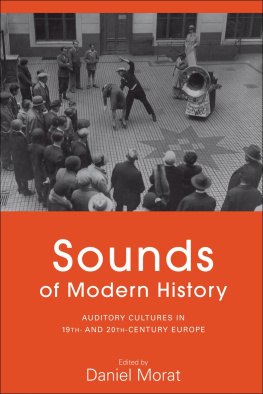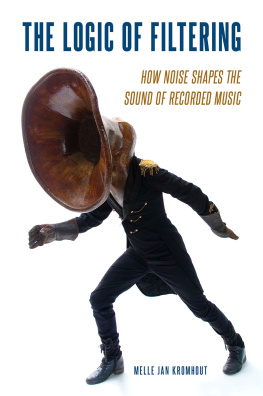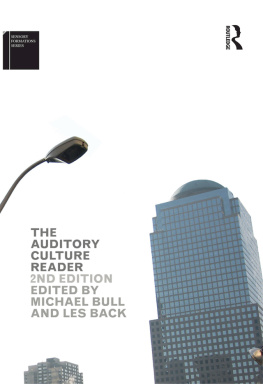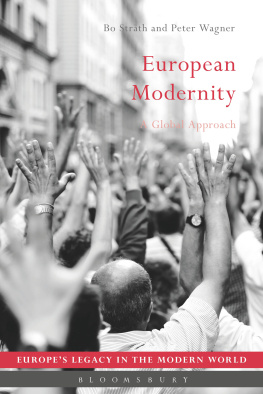First edition published in 2014 by
Berghahn Books
www.berghahnbooks.com
2014, 2017 Daniel Morat
First paperback edition published in 2017
All rights reserved. Except for the quotation of short passages
for the purposes of criticism and review, no part of this book
may be reproduced in any form or by any means, electronic or
mechanical, including photocopying, recording, or any information
storage and retrieval system now known or to be invented,
without written permission of the publisher.
Library of Congress Cataloging-in-Publication Data
Sounds of modern history: auditory cultures in 19th- and 20th-century
Europe / edited by Daniel Morat.
pages cm
Includes bibliographical references and index.
ISBN 978-1-78238-421-2 (hardback: alkaline paper) ISBN 978-1-78533-349-1 (paperback) ISBN 978-1-78238-422-9 (ebook)
1. EuropeCivilization19th century. 2. EuropeCivilization20th century. 3. EuropeSocial life and customs. 4. EuropeSocial conditions. 5. SoundSocial aspectsEuropeHistory. 6. SoundRecording and reproducingEuropeHistory. 7. HearingSocial aspectsEuropeHistory. 8. NoiseSocial aspectsEuropeHistory. 9. Social changeEuropeHistory. I. Morat, Daniel, 1973
CB417.S68 2014
306.09409034dc23
2014009648
British Library Cataloguing in Publication Data
A catalogue record for this book is available from the British Library
ISBN 978-1-78238-421-2 (hardback)
ISBN 978-1-78533-349-1(paperback)
E-ISBN 978-1-78238-422-9 (ebook)
INTRODUCTION
Daniel Morat
In 2005 Michele Hilmes asked whether there was a field called sound culture studies and whether it mattered. Michele Hilmess first question can therefore certainly be answered in the affirmative. But what about her second question: Does it matter?
This pertinent question can only be posed from a specific point of view. In the present collection, it will be posed from the point of view of modern history. The history of sound and of auditory perception is only a part of the larger field of sound studies, which is still dominated by media and cultural studies. Nevertheless, the subfield of sound history has also been very lively during the last few years. The central question of this collection, therefore, is whether the study of sound and of auditory cultures can open up new perspectives on the history of nineteenth- and twentieth-century Europe.
In the context of recent historiography, the scholarship on the history of sound and of hearing can be described as being part of a larger trend towards the history of the senses. obscures the fact that since the mid nineteenth century the very conditions and habits of hearing and listening have also been subject to fundamental change occasioned by modern phenomena such as urbanization, industrialization, and mechanization on the one hand and the emergence of sound recording and sound transmission media on the other hand. Accordingly, it appears appropriate for historians of modernity to deal not only with visual history but also with the cultural meaning of hearing and listening, and the historical changes they have undergone. What role did sound and aurality play in the coming about of modernity? Have auditory regimes been equally important in the formation of modern culture and modern subjectivity as scopic regimes? Which dimensions of modernity have been overlooked by privileging its visual character?
In order to answer these and similar questions, the chapters in this collection focus on the period roughly between 1850 and 1950.
Many of the contributors to this collection come from the field of German history, which is why many of the historical case studies present German examples. The collection does not ask questions, though, about the specificity of national sounds. Examples are also taken from the history of England, France, the Netherlands, and Austria. Rather, the chapters are based on the assumption of common developments in the industrialized nations of Europe, even if there are of course national differences and national developments that have sometimes taken different trajectories and time courses. Taken together, the chapters of this collection provide insights into the commonalities and differences of European auditory cultures in the modern age.
Finally, a comment on the concepts and semantics applied in this collection is appropriate here. It is an interesting feature of the current debates in sound studies that, despite its consolidation, the field has not yet developed a standardized terminology, let alone methodology. You can find the different notions of sound history, aural history, auditory history, history of hearing, and history of listening, and of either auditory, hearing, listening, or audio cultures, alongside each other without a very clear understanding of the differences between them. Accordingly, no attempts have been made to standardize the terms or concepts in the different chapters of this collection. Instead, a variety of notions and concepts have deliberately been allowed in order to present different approaches to the history of sound and of auditory cultures.
Still, there are a few basic assumptions which are shared by all contributors to this collection. The most important one can be phrased in the words of Jonathan Sterne: Sound is an artifact of the messy and political human sphere. Hearing is not simply a bodily and physical phenomenon but also a cultural capacity, and is therefore, like all sensory perception, subject to historical change. This also means that the practices of making sounds and listening to them are embedded in a wider cultural, social, and political framework, and that they are themselves being shaped by this framework at the same time as they are helping to shape it. This interplay is what the notion of auditory culture is intended to capture. This is why it has been chosen to function as a common denominator for this collection, even though not all of the contributors use it in their chapters.
they both argue that the invention of sound technologies, such as the phonograph and the telephone, at the end of the nineteenth century was not the beginning of or single cause for fundamental changes in auditory cultures but rather the culmination of earlier tendencies to archive, analyze, and manipulate sound and auditory experience. Pickers chapter, English Beat: The Stethoscopic Eras Sonic Traces, does so by dealing primarily with literary texts, which he examines for signs of a larger cultural shift toward close listening during the nineteenth century. He then analyzes several spoken word recordings of English authors made by phonograph in the 1880s and 1890s to find that the advent of sound recording simultaneously severed and deepened the relationship between speaker and speech. Anthony Enns, in his chapter The Human Telephone: Physiology, Neurology, and Sound Technologies, retraces the ways in which the development of nineteenth-century sound technologies, such as the phonautograph, the telephone, and the audiometer, relied on scientific studies of physiology, otology, and neurology, which similarly introduced a mechanistic understanding of auditory perception. Nineteenth-century sound technologies were therefore based on the standardization, automatization, and electrification of auditory perception. That is why Enns, in his conclusion, considers them to be inhuman.












